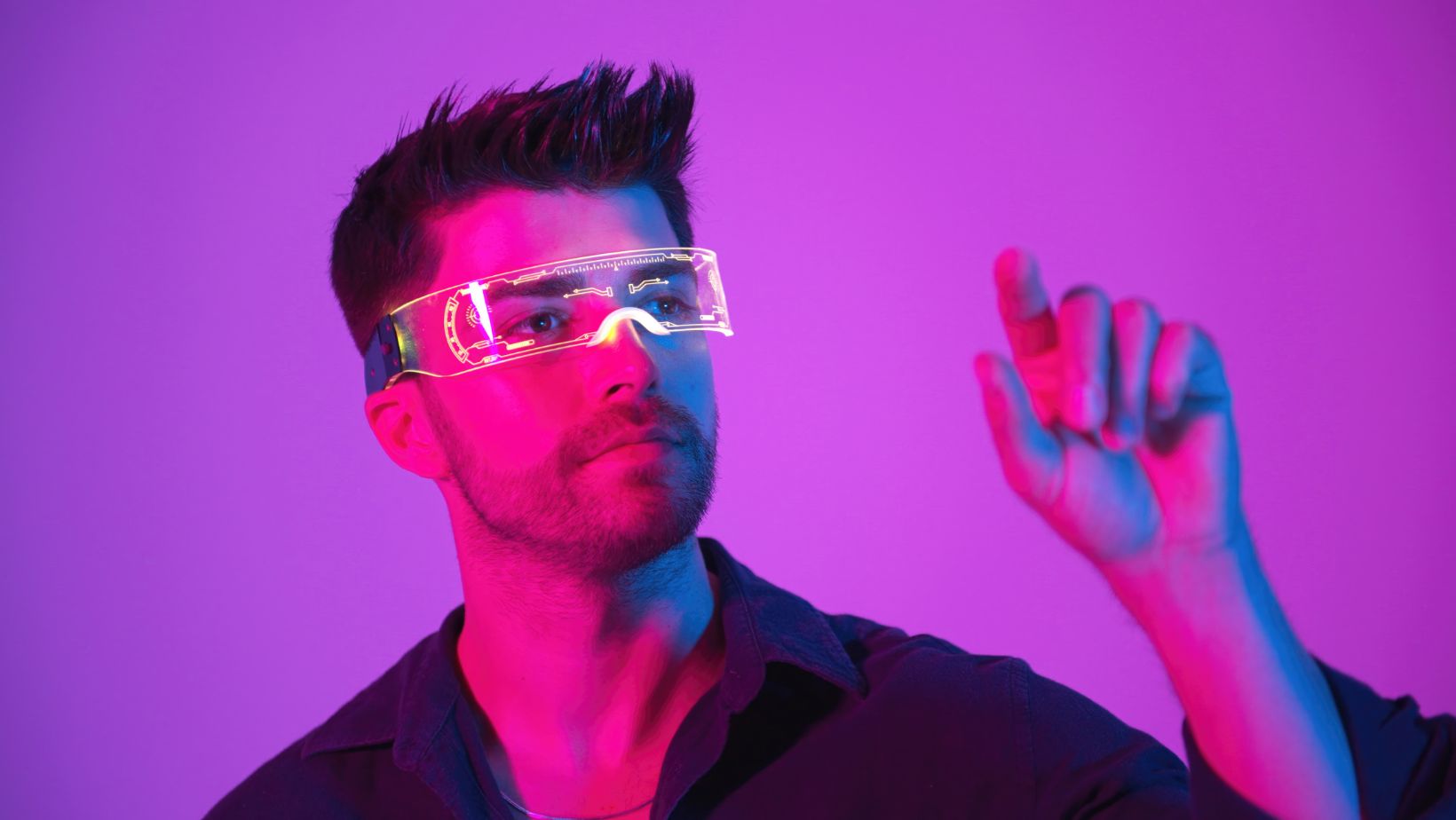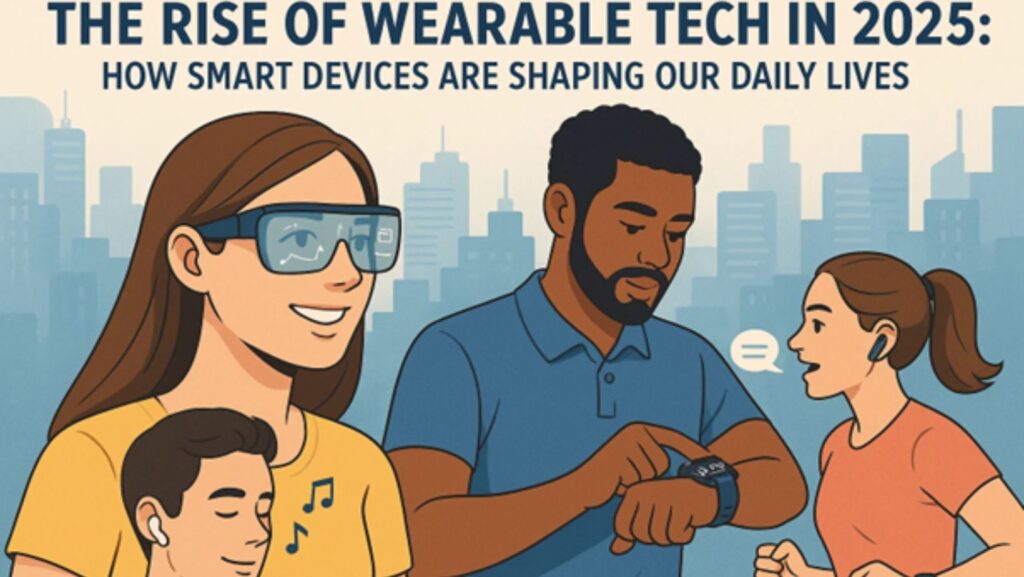Wearable technology has evolved from a niche novelty to a mainstream phenomenon, transforming the way we interact with the world around us. In 2025, smart devices like fitness trackers, smartwatches, augmented reality (AR) glasses, and even smart clothing will become integral parts of our daily lives, offering unprecedented levels of convenience, connectivity, and personalization. From monitoring health metrics to enhancing productivity and even redefining entertainment, wearables are reshaping how we live, work, and play in the digital age.
The wearable tech market has seen explosive growth, with global sales reaching $81 billion in 2024, according to a report by Statista, and projections estimating a 15% annual growth rate through 2028. A 2024 survey by Gartner revealed that 60% of adults now use at least one wearable device, up from 40% in 2020, driven by advancements in battery life, sensor accuracy, and AI integration. These devices are no longer just gadgets—they’re powerful tools that empower users to take control of their health, streamline their routines, and stay connected in a fast-paced world.
This article explores the rise of wearable tech in 2025, delving into how smart devices are shaping our daily lives across various domains, including health, fitness, productivity, and entertainment. We’ll examine the latest innovations, the technology behind them, and the trends driving their adoption while providing insights, statistics, and a comparison table to help you understand their impact. Whether you’re a tech enthusiast, a professional, or simply curious about the future of wearables, this guide will offer a comprehensive look at how these devices are revolutionizing modern living.
1. Wearable Tech in Health and Fitness: A Revolution in Wellness
Wearable technology has become a cornerstone of personal health and fitness, empowering users to monitor their well-being with unprecedented precision. In 2025, these devices are more advanced than ever, offering features that go beyond basic step counting to provide holistic health insights.
Advanced Health Monitoring
Modern wearables, such as the Apple Watch Series 10 and Fitbit Charge 6, now include advanced sensors that track a wide range of health metrics, including heart rate variability (HRV), blood oxygen levels, and even early signs of illness like irregular heart rhythms. Some devices, like the Oura Ring 4, can measure body temperature to detect potential infections, while others use AI to analyze sleep patterns and provide personalized recommendations for better rest. A 2024 report by IDC found that 50% of wearable users now rely on their devices for health monitoring, up from 35% in 2020.
Fitness Tracking and Personalized Coaching
Wearables are also revolutionizing fitness by offering real-time tracking and personalized coaching. Devices like the Garmin Forerunner 965 use GPS to track running routes, pace, and elevation, while AI-driven algorithms provide tailored workout plans based on your fitness level and goals. For example, a runner training for a marathon might receive a customized plan that adjusts weekly based on their progress. A 2024 survey by Statista revealed that 45% of fitness wearable users reported improved workout consistency thanks to personalized coaching features.
Mental Health and Stress Management
In 2025, wearables are increasingly focusing on mental health, with features designed to manage stress and promote mindfulness. Devices like the Fitbit Sense 2 include stress tracking through electrodermal activity (EDA) sensors, which measure changes in skin conductance to gauge stress levels. Many wearables also offer guided breathing exercises and meditation sessions, helping users reduce anxiety. A 2024 study by the American Psychological Association found that 60% of wearable users who engaged in stress management features reported a 20% reduction in stress levels over six months.
2. Wearable Tech in Productivity: Enhancing Work and Daily Routines
Wearable technology is not just about health—it’s also transforming how we work and manage our daily routines. In 2025, smart devices are helping users stay organized, focused, and efficient in a fast-paced world.
Smartwatches for Time Management
Smartwatches like the Samsung Galaxy Watch 7 are becoming essential tools for time management, offering features like calendar integration, reminders, and notifications at a glance. For professionals, this means staying on top of meetings, deadlines, and emails without constantly checking their phones. Some devices even use AI to prioritize notifications based on your schedule, ensuring you focus on what matters most. A 2024 report by Gartner noted that 40% of professionals now use smartwatches for productivity, up from 25% in 2020.
AR Glasses for Enhanced Workflows
Augmented reality (AR) glasses, such as the Nreal Air 2, are gaining traction in 2025, offering hands-free access to information and virtual workspaces. For example, engineers can use AR glasses to overlay schematics onto physical equipment, while remote workers can project virtual screens for multitasking. These devices are particularly useful for industries like manufacturing and healthcare, where real-time data access is critical.

A 2024 IDC report predicted that AR wearable shipments will reach 10 million units by 2025, driven by workplace applications.
Wearable Payment Systems
Contactless payment systems integrated into wearables, such as smartwatches and smart rings, are streamlining daily transactions. Devices like the Apple Watch and the McLear Ring allow users to make payments with a tap, eliminating the need for cash or cards. This feature is particularly convenient for busy professionals and travelers, with a 2024 Statista survey revealing that 35% of wearable users now use their devices for payments, up from 20% in 2020.
3. Wearable Tech in Entertainment: Redefining Digital Fun
Wearable technology is also reshaping the entertainment landscape, offering new ways to enjoy digital content, games, and immersive experiences. In 2025, these devices are enhancing how we interact with media and unwind after a busy day.
AR and VR for Immersive Experiences
AR and VR wearables, such as the Meta Quest 3 and Snap Spectacles, are revolutionizing entertainment by offering immersive experiences. VR headsets allow users to dive into virtual worlds for gaming, concerts, or even virtual travel, while AR glasses overlay digital content onto the real world, enhancing experiences like watching movies or playing interactive games. A 2024 report by Juniper Research predicted that the VR entertainment market will grow to $8 billion by 2026, driven by the increasing affordability of VR devices.
Smartwatches for Media Control
Smartwatches are becoming hubs for media control, allowing users to manage music, podcasts, and videos directly from their wrists. For example, the Apple Watch lets users play, pause, or skip tracks on their phone or Bluetooth headphones, while some devices, like the Samsung Galaxy Watch, can store music for offline playback. This feature is particularly useful for users on the go, with a 2024 Statista survey noting that 50% of smartwatch users use their devices for media control.
For those looking to unwind with a quick digital break, wearable tech can also connect seamlessly with entertainment apps. Platforms like https://jetx-game.games/eng/ offer engaging online games that can be accessed on your device, providing a fun way to relax after a long day of work or tech exploration. These digital entertainment options highlight how wearables are integrating with broader tech ecosystems to enhance leisure time.
4. Technology Behind Wearable Devices in 2025
The rise of wearable tech in 2025 is driven by advancements in hardware, software, and connectivity, making these devices more powerful, efficient, and user-friendly. Here’s a look at the key technologies powering wearables.
Advanced Sensors and AI Integration
Wearables in 2025 use advanced sensors, such as photoplethysmography (PPG) for heart rate monitoring and accelerometers for motion tracking, to collect precise data. AI algorithms analyze this data to provide actionable insights, such as detecting irregular heart rhythms or recommending workout adjustments. A 2024 report by IDC noted that 70% of new wearables now include AI-driven features, up from 50% in 2020, enhancing their functionality and accuracy.
Improved Battery Life and Energy Harvesting
Battery life remains a key challenge for wearables, but 2025 sees significant improvements through energy-efficient chips and energy-harvesting technologies. For example, some devices, like the Garmin Enduro 2, use solar charging to extend battery life, while others employ kinetic energy harvesting, converting movement into power. A 2024 TechRadar report found that 60% of wearable users prioritize battery life, with new devices offering up to 30 days of use on a single charge.
5G Connectivity for Real-Time Data
The rollout of 5G networks has enhanced wearable connectivity, enabling real-time data syncing and faster communication with paired devices. This is particularly useful for health wearables that need to send alerts to doctors or for AR glasses that stream high-quality content. A 2024 Statista report noted that 40% of wearables now support 5G, up from 15% in 2022, improving their performance and reliability.
5. Trends Shaping Wearable Tech in 2025
The wearable tech landscape in 2025 is being shaped by several key trends, driven by technological advancements and consumer demand. Here’s what to expect.
Health-Focused Wearables with Medical-Grade Accuracy
Wearables are increasingly being used for medical purposes, with devices like the Withings ScanWatch 2 offering medical-grade accuracy for metrics like ECG and blood oxygen levels. Some wearables are even being integrated into healthcare systems, allowing doctors to monitor patients remotely. A 2024 report by Gartner predicted that 30% of wearables will be used for medical monitoring by 2025, up from 15% in 2020.
Fashion-Forward Designs
Wearable tech is becoming more stylish, with brands like Fossil and Tag Heuer launching smartwatches that double as fashion accessories. Smart jewelry, such as the Bellabeat Leaf Urban, offers discreet health tracking in elegant designs, appealing to a broader audience. A 2024 Statista survey found that 50% of wearable users consider design a key factor in their purchase decision, up from 35% in 2020.

Table: Key Wearable Tech Trends in 2025
| Trend | Description | Impact |
| Medical-Grade Wearables | Devices with ECG, blood oxygen monitoring | Enhances health management, doctor integration |
| Fashion-Forward Designs | Stylish smartwatches, smart jewelry | Broadens appeal, attracts new users |
| Energy Harvesting Tech | Solar, kinetic energy for extended battery life | Reduces charging frequency, improves usability |
| 5G Connectivity | Real-time data syncing, faster communication | Improves performance, enables new features |
6. Challenges and Future of Wearable Tech
While wearable tech offers immense potential, it also faces challenges that could impact its growth. Here’s a look at the hurdles and what lies ahead.
Data Privacy Concerns
As wearables collect sensitive health and personal data, privacy concerns are a major challenge. In 2025, companies are addressing this by implementing end-to-end encryption and giving users more control over their data. A 2024 Cybersecurity Insiders survey found that 70% of wearable users are concerned about data privacy, pushing brands to prioritize security.
Battery Life and Sustainability
Despite improvements, battery life remains a limitation for some wearables, particularly those with advanced features like AR. Additionally, the environmental impact of producing and disposing of wearables is a growing concern. Brands are responding by using recycled materials and offering recycling programs, with a 2024 BloombergNEF report noting that 40% of wearable manufacturers now use sustainable materials, up from 20% in 2020.
The Future: Integration with AI and IoT
Looking ahead, wearables are set to become even more integrated with AI and the Internet of Things (IoT). For example, a smartwatch might sync with your smart home to adjust lighting based on your sleep patterns, or an AR headset could provide real-time navigation during travel. A 2024 Gartner report predicted that 50% of wearables will be fully integrated with IoT ecosystems by 2027, creating a more connected and seamless user experience.
Conclusion: Embracing Wearable Tech in 2025
The rise of wearable tech in 2025 is transforming our daily lives, offering innovative solutions for health, productivity, entertainment, and more. From advanced health monitoring and personalized fitness coaching to AR-enhanced workflows and stylish designs, these smart devices are empowering users to live smarter, healthier, and more connected lives. As technology continues to evolve, wearables will play an even greater role in shaping the future, bridging the gap between the digital and physical worlds—just as they continue to redefine how we interact with technology every day.


